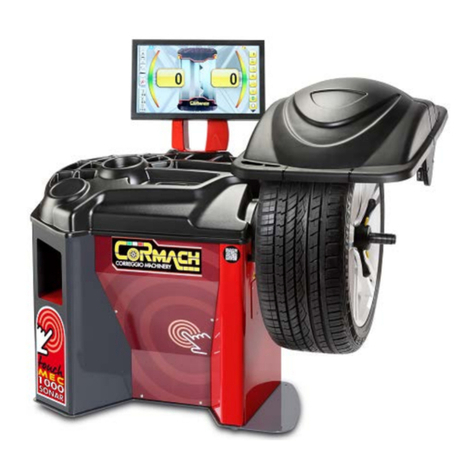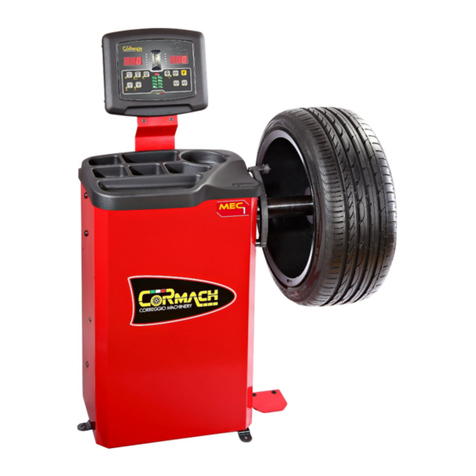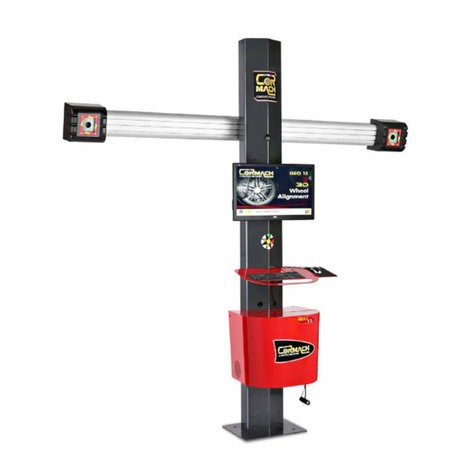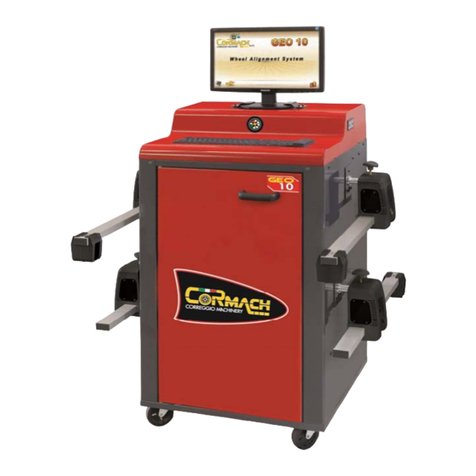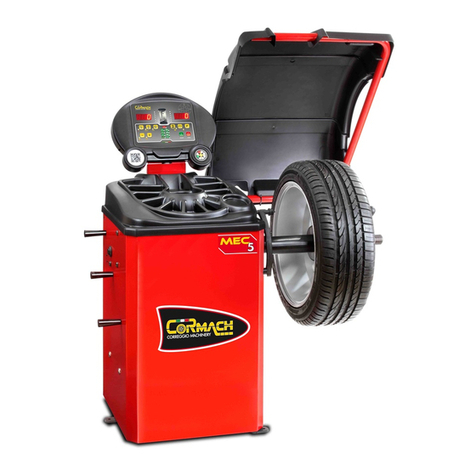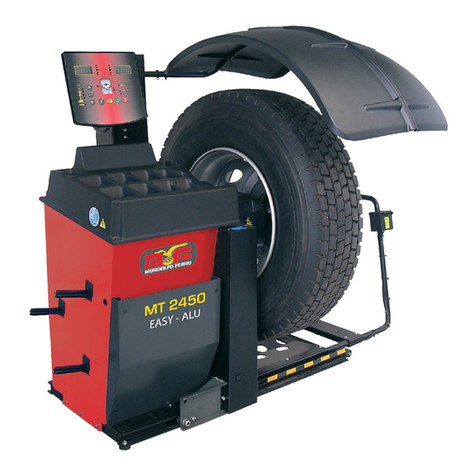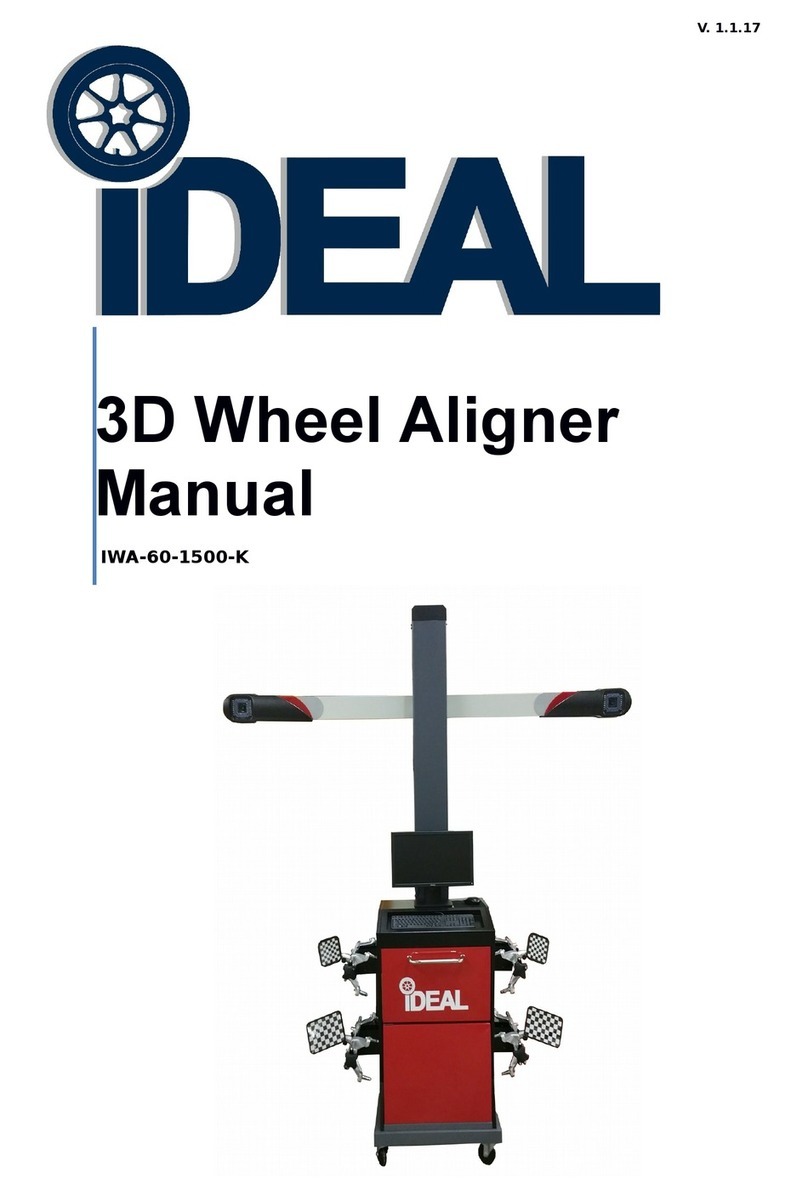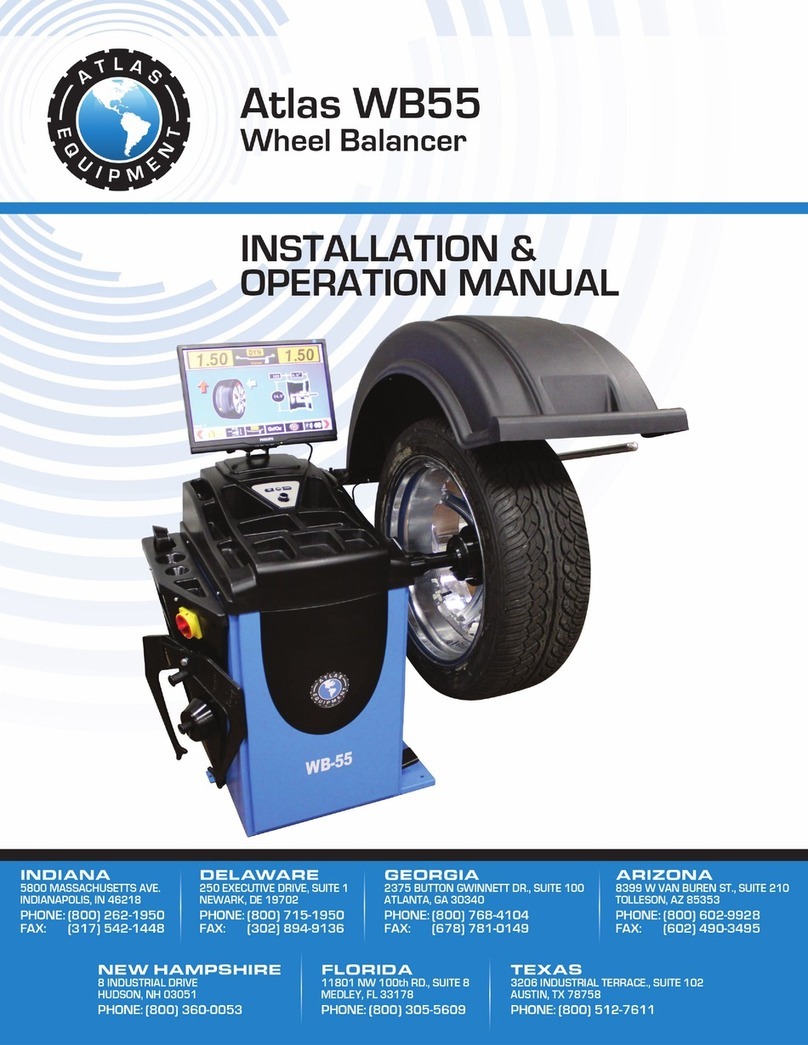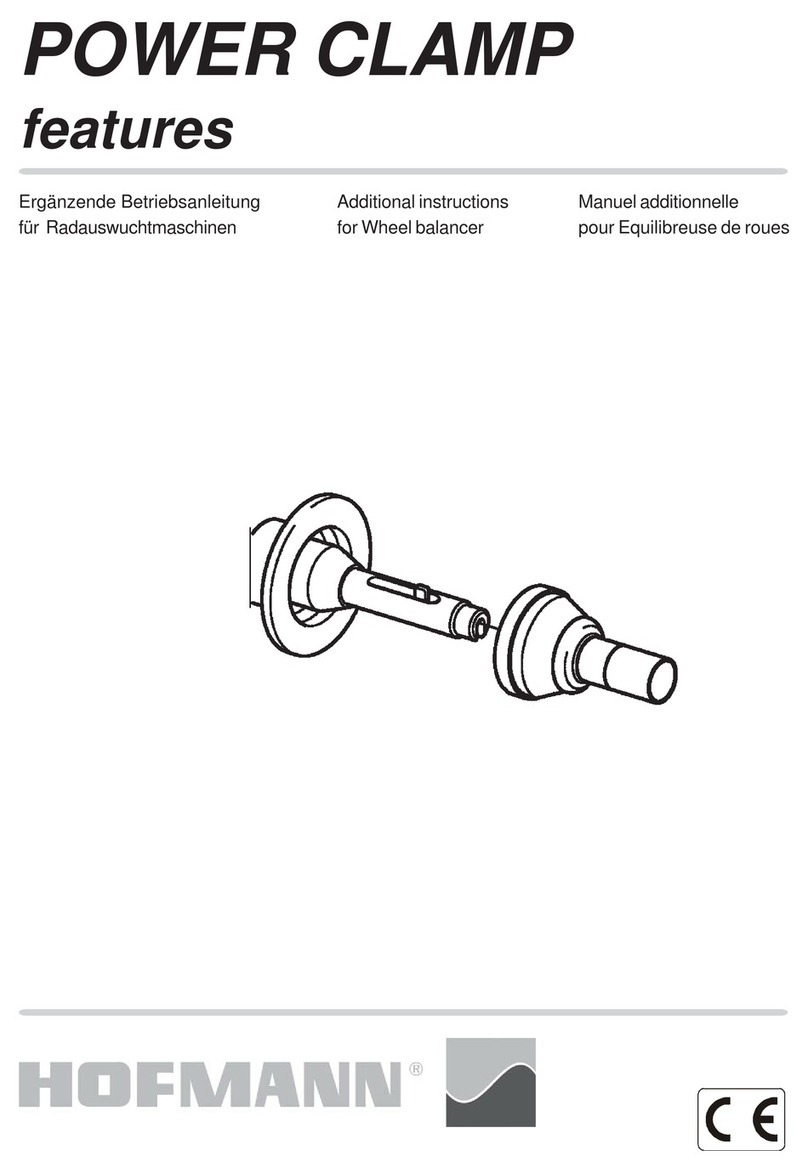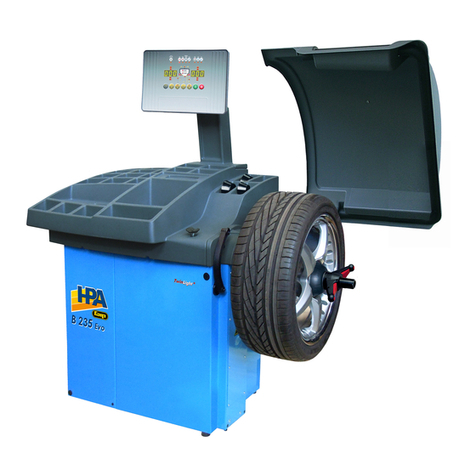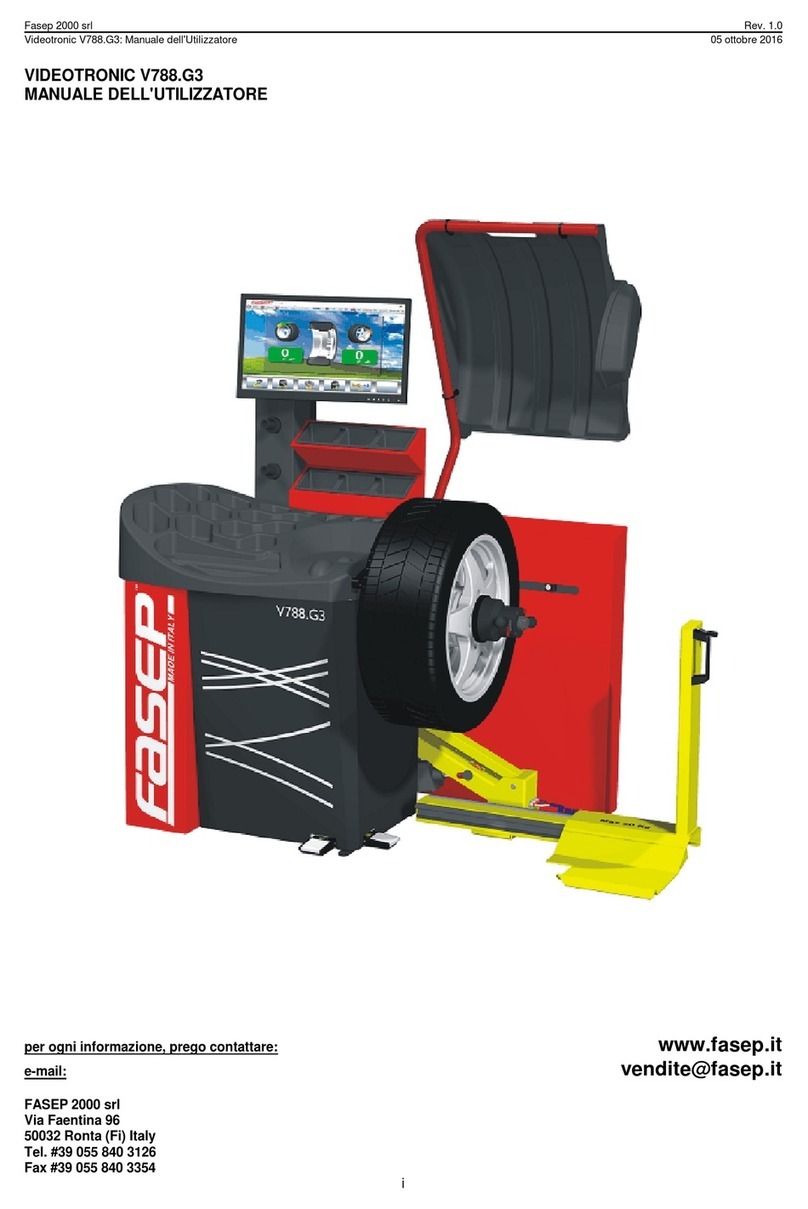
5
INTRODUCTION
The purpose of this manual is to provide
the owner and machine operator with
effective, safe instructions for the use
and maintenance of the aligner�
If these instructions are followed carefully,
the machine will give you the efficient
and long-lasting service that has always
characterised the producer products, thus
making your work considerably easier�
The following paragraphs defi e the levels
of danger regarding the machine associ-
ated with the warning captions found in
this manual:
DANGER
Refers to immediate dangers that result
in serious injuries or even death.
WARNING
Refers to dangers or procedures that are
not totally safe and that could result in
serious injuries or even death.
CAUTION
Refers to dangers or procedures that
are not totally safe and that could result
in minor injuries or material damage.
Read these instructions carefully before
operating the machine� Keep this manual
and the illustrated materials supplied with
the equipment in a folder near the place
of operation so as to allow the machine
operators to consult the documentation
at any time�
The technical documentation supplied is
considered an integral part of the machine;
in the event of sale all relative documen-
tation must remain with the equipment�
The manual is only to be considered valid
for the machine serial number and model
stated on the attached nameplate�
WARNING
The instructions and information de-
scribed in this manual must always be
complied with: the producer shall not be
held responsible for any operation not
specifically described and authorised in
this manual.
WARNING
The wheel aligner is a measuring tool,
so the suggestions for the adjustments
to be made on the vehicle (animations
or fixed help-on-line contained in the
aligner) are merely indicative. In any
case, before making any intervention on
the vehicle, the operator must examine
and be aware of the regulations (in other
words the instructions or recommenda-
tions of the manufacturer), and always
make the adjustments in compliance
with such priority indications.
The company declines all responsibility
deriving from the execution of such
regulations and any damage that could
eventually result.
Note
Some of the illustrations contained in
this booklet were taken from pictures of
prototypes: standard production machines
may differ slightly in certain respects�
These instructions are for the attention
of persons with basic mechanical skills�
We have therefore omitted to provide
detailed instructions regarding, for exam-
ple, how to loosen or tighten the fixing
devices, etc�
Do not attempt to perform operations
unless properly qualified or with suitable
experience�
If necessary, please contact an authorised
Service Centre for assistance�
